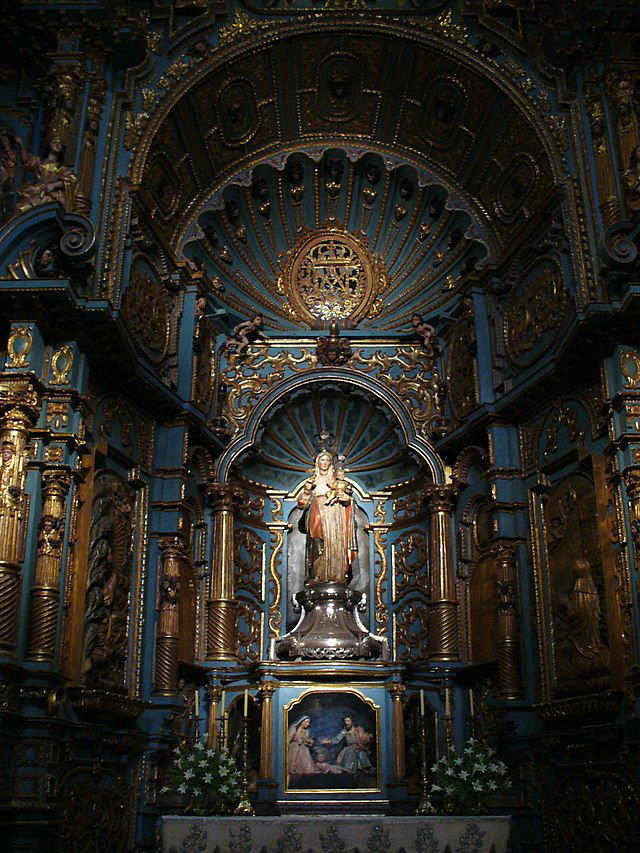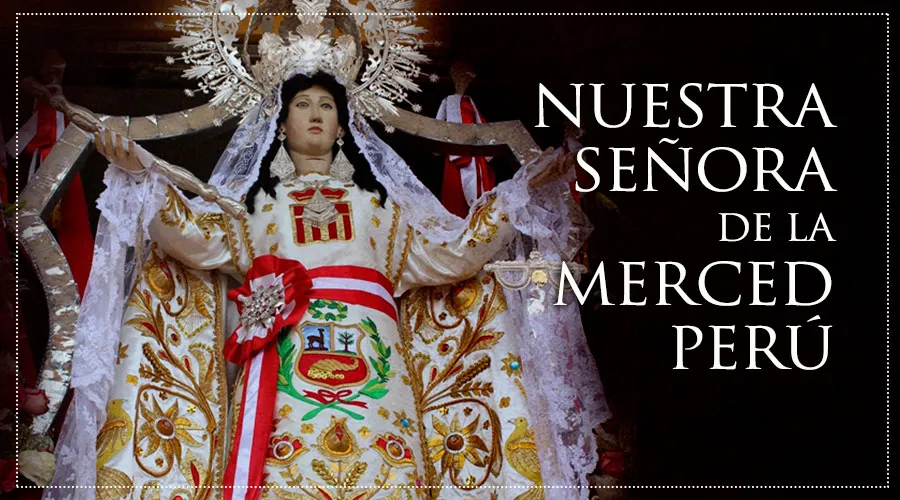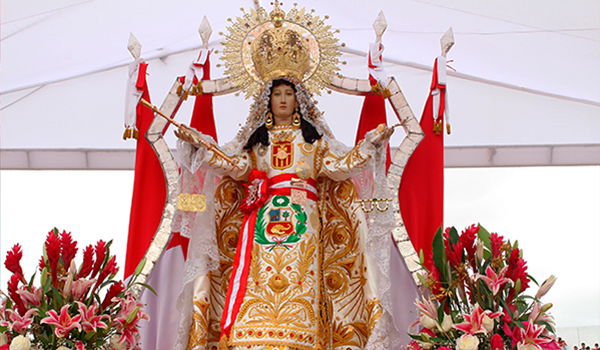Our Lady of Evangelization Patroness of Peru

Peru Central Feast: May 14th
According to a solid tradition supported by the oldest chronicles, the image of Our Lady of Evangelization was given to the newly created diocese of Lima by Emperor Charles V of Spain around 1540. It is therefore, one of the oldest images of the region that receives worship.
Located in the main altarpiece of the first cathedral, the image of Our Lady of Evangelization received the cult of the great Peruvian saints and presided over the famous Councils Limenses, particularly the third, which was so important to deepen the first evangelization of an important part of Latin America.
The first rose bloomed in the city by the first bishop of the diocese, Fray Jerónimo de Loayza, was placed before her in the midst of a great celebration.
The venerated image presided over the life of the Archdiocesan Church of Lima, which was so important in spreading the Gospel from Nicaragua to Cape Horn. Before her the Te Deum was intoned on the occasion of the National Independence in 1821.
The image was restored, returning it to its original splendor, and placed on the altar of the Blessed Sacrament in the Cathedral of Lima, where it receives the worship of the faithful.
In 1985, during his first visit to Peru, Pope John Paul II solemnly crowned her, consecrating her to the Nation; and three years later, on the occasion of the Eucharistic and Marian Congress of the Bolivian countries, the Holy Father honored her in an extraordinary way by granting her the Golden Rose.
The metropolitan chapter daily honors Our Lady of Evangelization with a Mass celebrated in her chapel, where the faithful receive the Eucharist, followed by the recitation of the holy rosary and the Marian litanies of the III Limense Council, attributed to Saint Toribio de Mogrovejo, patron of the Latin American Episcopate.


Our Lady of Mercy
Feast: September 24thThe devotion to the Virgin of Mercy in Peru goes back to the times of the foundation of Lima. It is known that the Mercedarian Fathers, who arrived in Peru along with the conquistadors, had already built their primitive conventual church around 1535, a temple that served as the first parish of Lima until the construction of the Main Church in 1540.
The Mercedarios not only evangelized the region but were also responsible for the development of the city by building the beautiful temples that today are preserved as a valuable historical, cultural and religious heritage. Along with these friars came their heavenly patron saint, the Virgin of Mercy, a Marian invocation from the 13th century.
Around 1218, St. Peter Nolasco and James I, King of Aragon and Catalonia, separately had the same vision of the Blessed Virgin who asked them to found a religious order dedicated to peacefully rescue the numerous Christian captives who were in the power of the Muslims. They gave themselves as captives of the Muslims as an exchange for the unfortunate ones who suffered this misfortune.This Order of Mercy, approved in 1235 as a military order by Pope Gregory IX, succeeded in freeing thousands of Christian prisoners, and later became dedicated to missions, teaching and social work. The Mercedarian friars took their habit from the vestments worn by the Virgin in the apparition to the founder of the order.
The image of the Virgin of Mercy is dressed entirely in white; over her long tunic she wears a scapular on which is printed, at chest level, the coat of arms of the order. A white mantle covers her shoulders and her long hair is veiled by a fine lace mantilla. In some images she is represented standing and in others seated; sometimes she is shown with the Child in her arms and others she has them extended showing a royal scepter in her right hand and in the other some open chains, symbol of liberation. This is the appearance of the beautiful image that is venerated in the Basilica de la Merced, in the capital of Lima, which was enthroned in the early seventeenth century and has been considered the patron saint of the capital.
She was proclaimed "Patroness of the Fields of Peru" in 1730; "Patroness of the Arms of the Republic" in 1823; and on the first centenary of the nation's independence, the image was solemnly crowned and received the title of "Grand Marshal of Peru" on September 24, 1921, solemnity of Our Lady of Mercy, since then declared a national holiday, occasion in which every year the army honors her high military rank of "Marshal".
The image carries numerous decorations awarded by the Republic of Peru and its rulers and national institutions. In 1970 the town council of Lima granted her the "Keys of the City" and in 1971 the President of the Republic imposed the Peruvian Grand Cross to the Naval Merit, gestures that demonstrate the affection and devotion of Peru to this invocation considered by many as its National Patroness.


